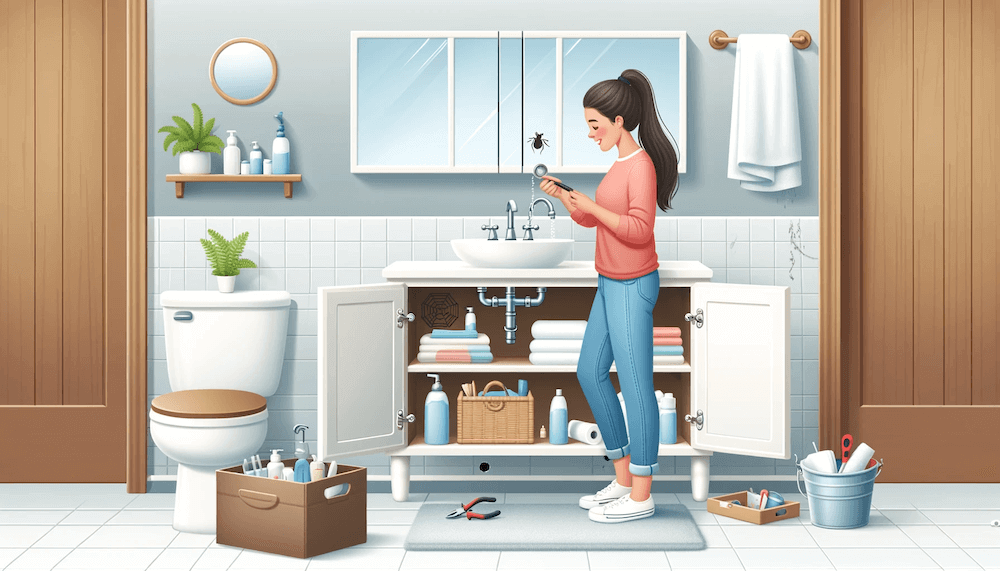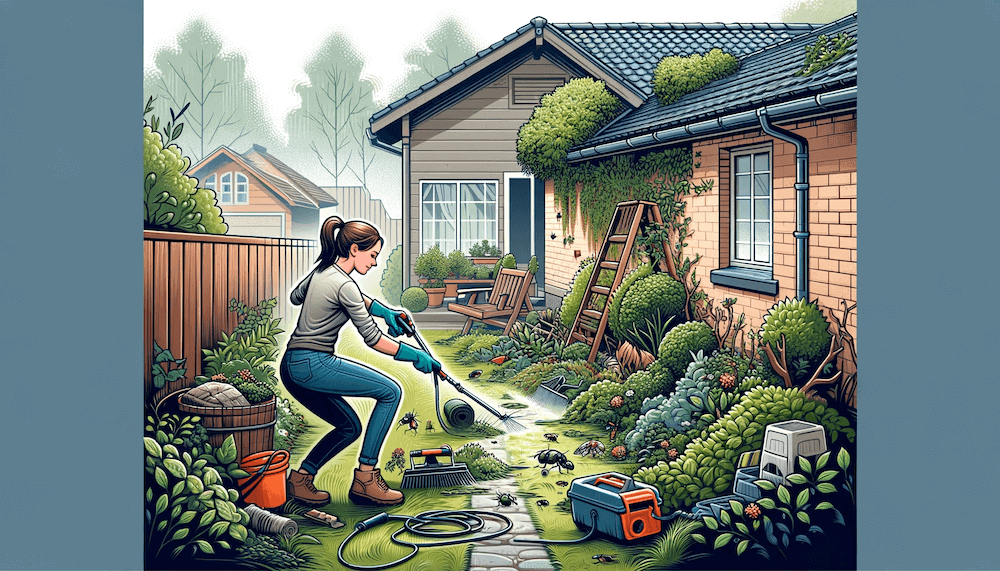Keeping your home safe and healthy includes regular pest inspections, and preparing your home for a pest inspection is key. It’s important because it helps the inspector do a thorough job and catch any pest problems early. So, how do you get your home ready for a pest inspection? This guide will show you the essential steps. By following these tips, you can ensure your home is well-prepared for the inspection. This not only makes the inspection more effective but also helps prevent pest problems from getting worse. Let’s dive into how to prepare your home for a pest inspection.
Before The Inspector Arrives
Scheduling The Inspection
Scheduling the inspection is the first step when preparing your home for a pest inspection. Choosing a time that allows maximum visibility, usually during daylight hours, is important to ensure the inspector can thoroughly examine every part of your home. Make sure to inform all household members and arrange for pets to be safely contained or relocated during the inspection to avoid disruptions. Additionally, when selecting a pest inspection service, beware of inspection scams. Always choose a reputable, licensed pest control company. Verify their credentials and read reviews from other customers to ensure you’re getting a legitimate and thorough service. This due diligence is essential for a successful and trustworthy inspection process.
Related Links
- Kansas City Real Estate Termite Inspection
- How To Prepare Your Lawn For Treatment
- How To Prepare Your Property For A Bed Bug Treatment
- Do I Need A Termite Inspection
Providing Access To Key Areas
Ensure the inspector has unobstructed access to crucial spots where pests will likely hide or enter. This includes basements, attics, crawl spaces, and utility rooms. Clear any clutter, furniture, or storage items that might block these areas. Doing so facilitates a thorough inspection and ensures that no potential pest habitats are overlooked. Pay special attention to areas often neglected, like storage rooms or rarely used corners of the house. The easier it is for the inspector to navigate these spaces, the more comprehensive the inspection will be.
Specific Areas To Focus On

Kitchen Preparation
Start by thoroughly cleaning the area and eliminating crumbs and residue that can attract pests. Store all food items in sealed containers to prevent attracting insects or rodents. Pay special attention to cleaning under and behind appliances like stoves and refrigerators. These areas often harbor unnoticed food particles and moisture. Ensure that the area under the sink is clear, as inspectors will check for signs of leaks and moisture, which are common attractors for pests. A clean and clutter-free kitchen not only aids in a more effective inspection but also helps identify potential problem areas where pests might be entering or nesting.
Bathroom Checks
When preparing for a pest inspection, don’t overlook your bathrooms. These areas are critical due to their typical moisture levels, which can attract various pests. Start by fixing leaks or dripping faucets, as even small amounts of standing water can be a breeding ground for pests like cockroaches and silverfish. Thoroughly clean the bathroom, paying special attention to areas under sinks and around toilets. Clear the cabinets and ensure all personal items are neatly stored or removed. This allows the inspector to easily access and thoroughly examine the area for any signs of pests, guaranteeing a comprehensive inspection.
Outdoor Preparations
The task of preparing your home for a pest inspection extends beyond the interior to include the outdoor areas as well. Begin by trimming back any overgrown vegetation, especially those touching your home’s structure. Overhanging branches and dense shrubbery allow pests to enter your house easily. Clear any debris, leaves, or standing water from your yard, as these can be breeding grounds for pests. Pay attention to gutters and drains, ensuring they are clean and free-flowing. A well-maintained outdoor area reduces potential pest habitats and allows the inspector to access and inspect the exterior of your home easily.

Addressing Common Pest Hotspots
Identifying And Clearing Hotspots
Focus on areas more prone to pest infestation, such as garbage storage, basements, garages, and utility rooms. These spaces often provide the perfect environment for pests due to their typically undisturbed nature and the availability of resources like food and shelter. Ensure these areas are clean, well-organized, and free of clutter. Regularly check and clear out any stored items since boxes and old furniture can be attractive nesting spots for pests. Paying attention to these hotspots and keeping them tidy can significantly reduce the likelihood of pest problems and facilitate a more effective inspection.
Sealing Entry Points
Sealing entry points is a critical preventive measure to keep pests like spiders out of your house. Conduct a thorough inspection around your home for any cracks, holes, or gaps in the walls, foundation, windows, and doors. These small openings are often unnoticed but can serve as gateways for pests to enter. Pay special attention to areas where utility lines enter the home, as these are common entry points. Use appropriate materials like caulk, weather stripping, or mesh to seal these gaps effectively. Regular maintenance to keep these barriers intact is vital for pest prevention, ensuring your home remains secure against unwanted intruders.
Safety Measures During Inspection
Safety measures during a pest inspection are crucial for the inspector’s safety and the well-being of those residing in the home. As you prepare your home for a pest inspection, ensure that all walkways and inspection areas are clear of obstacles to prevent accidents. If any chemicals or baits are to be used during the inspection, discuss this with the inspector beforehand and follow their guidance on safety precautions, particularly if you have children or pets. Keep a safe distance from the inspector while they work, and wear protective gear if advised. Adequate preparation and safety awareness are key to a smooth and secure inspection process.
Implementing Preventative Measures
Implementing preventative measures following a pest inspection is essential for maintaining a pest-free home. One key aspect is to keep your kitchen spotless. Store food in sealed containers and regularly dispose of garbage. Beyond the kitchen, reduce clutter throughout your home to eliminate potential hiding spots for pests. Regularly inspect and maintain the exterior of your home, including sealing any cracks and removing standing water. Adopting these habits creates a less attractive environment for pests, thereby reducing the likelihood of future infestations.
Get Ready For Your Next Pest Inspection The Right Way
Taking the time to prepare your home for a pest inspection is an investment in the health and safety of your living space. Ensuring that your home is well-prepared facilitates a more thorough and effective inspection and plays a critical role in pest prevention. Remember, post-inspection, it’s equally important to maintain a pest-free environment. Engaging in regular cleaning, DIY pest repelling practices, and following the inspector’s recommendations are key to keeping pests at bay. By following these guidelines, you can create a safer, healthier home for you and your family, free from the worries of pest infestations.
Be Sure To Check Out Our Services:
Termites — Commercial Pest Control — Residential Pest Control — Bed Bugs









